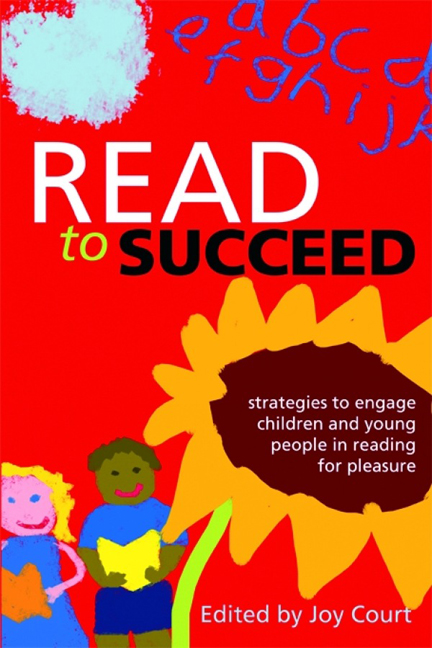Book contents
- Frontmatter
- Dedication
- Contents
- Foreword
- Contributors
- Introduction
- 1 It's never too soon to start
- 2 How children begin to read
- 3 Creating young readers: teachers and librarians at work
- 4 The six dimensions of the ‘honeycomb’ model, and its implications for literacy, libraries and literature in New Zealand
- 5 The Summer Reading Challenge in libraries: a continuing success
- 6 Stockport does Book Idol! A case study linking libraries and schools to inspire reading for pleasure
- 7 There and back again: restoring reading to the classroom
- 8 Promoting excellence: shadowing the CILIP Carnegie and Kate Greenaway Medals
- 9 Choice and motivation: local book awards
- 10 The sport of reading
- 11 Adventures in the book trade: libraries and partnerships
- 12 The hard-to-reach reader in the 21st century
- 13 Creative reading and insideadog.com.au
- Index
- Miscellaneous Endmatter
- Miscellaneous Endmatter
- misc-endmatter
9 - Choice and motivation: local book awards
Published online by Cambridge University Press: 08 June 2018
- Frontmatter
- Dedication
- Contents
- Foreword
- Contributors
- Introduction
- 1 It's never too soon to start
- 2 How children begin to read
- 3 Creating young readers: teachers and librarians at work
- 4 The six dimensions of the ‘honeycomb’ model, and its implications for literacy, libraries and literature in New Zealand
- 5 The Summer Reading Challenge in libraries: a continuing success
- 6 Stockport does Book Idol! A case study linking libraries and schools to inspire reading for pleasure
- 7 There and back again: restoring reading to the classroom
- 8 Promoting excellence: shadowing the CILIP Carnegie and Kate Greenaway Medals
- 9 Choice and motivation: local book awards
- 10 The sport of reading
- 11 Adventures in the book trade: libraries and partnerships
- 12 The hard-to-reach reader in the 21st century
- 13 Creative reading and insideadog.com.au
- Index
- Miscellaneous Endmatter
- Miscellaneous Endmatter
- misc-endmatter
Summary
Introduction
A book awards programme that is devised and run in their immediate locality offers young people a unique opportunity to respond to texts, to encounter the past, to imagine different ways of leading their lives and to come into contact with new ideas and thinking. Rigorous discussion and debate arise as a consequence of appraising the books, and awards present an ideal way to break down some of the stereotypes that perpetuate notions about boys not reading and young people's apathy.
The longest-running local book award in the UK is the Lancashire Book of the Year. It was first awarded in 1987 to a relatively unknown Philip Pullman for the first of his Sally Lockhart novels, The Ruby in the Smoke. The award was the first local one where young people were solely responsible for the judging, selecting their own short list in addition to choosing the overall winner. This chapter will focus on the Lancashire Book of the Year, exploring some of the challenges and opportunities that arise from running local book awards. It will include practical methodologies for helping to embed awards by maximizing their impact and ensuring sustainability.
A brief history
The 1980s were a rich era not only for the creation of children's books, but also for celebrating core excellence within the field. A host of awards gave opportunities for authors, illustrators and individual books to gain recognition. The Library Association-administered Carnegie and Greenaway Medals were flourishing, respectively recognizing excellence in fiction for children and in illustrated books for children. The Guardian Award for Children's Fiction was similarly an established part of the landscape of children's literature. Newcomers during the decade included the Kurt Maschler Award, presented in recognition of a synergy between text and illustration, and the Mother Goose Award, which gave the chance to reward new talent in the field of children's book illustration. The winners of all of these awards, however, were determined by adult commentators on the world of children's books.
- Type
- Chapter
- Information
- Read to SucceedStrategies to Engage Children and Young People in Reading for Pleasure, pp. 153 - 170Publisher: FacetPrint publication year: 2011

